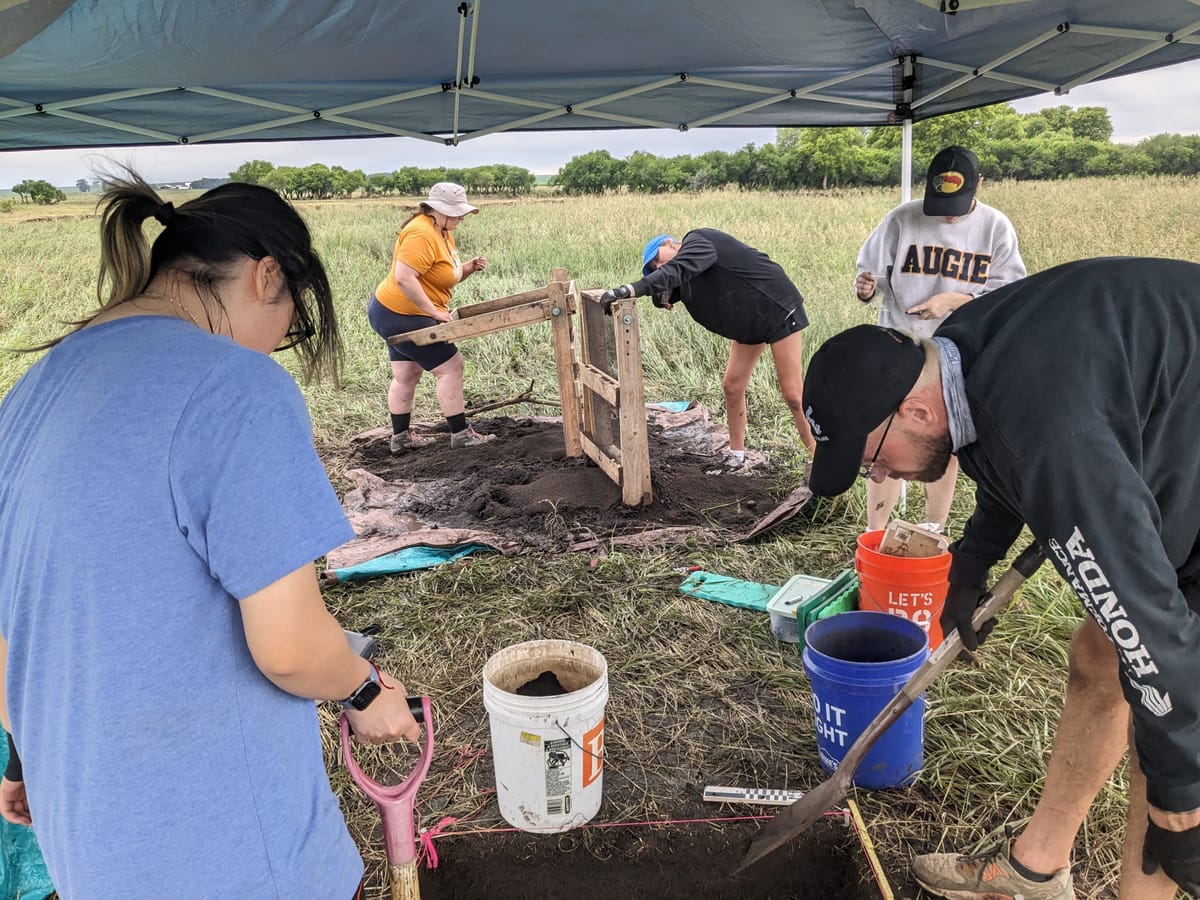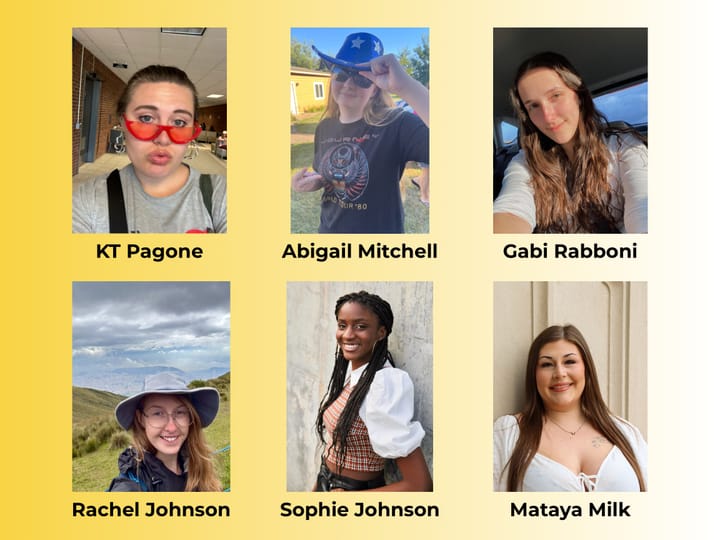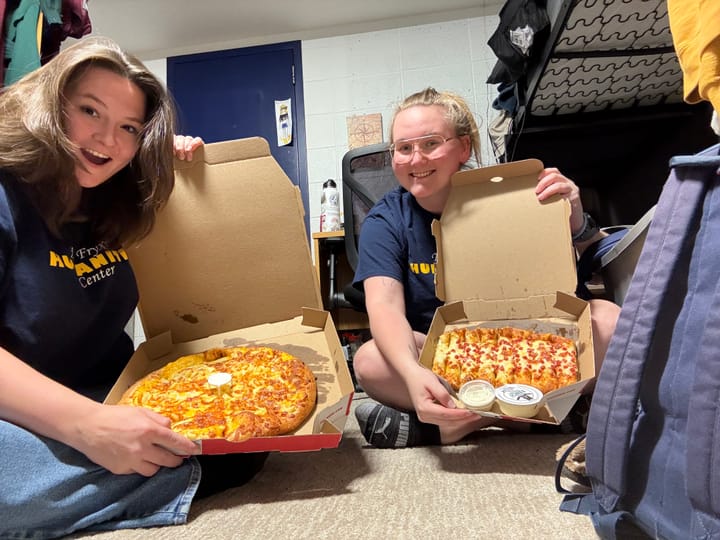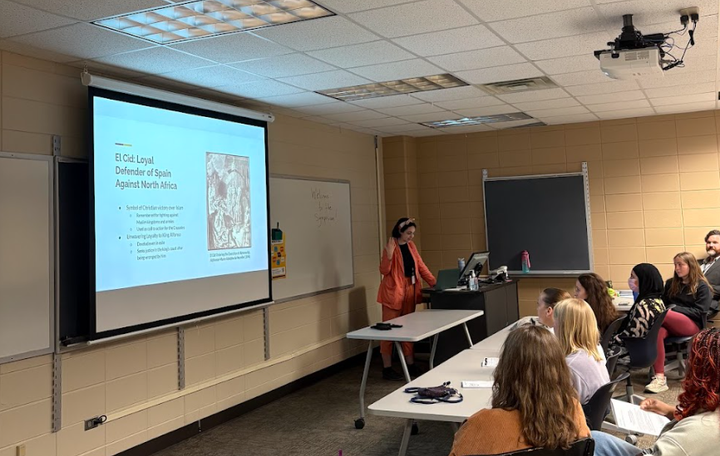Behind the scenes of the Archaeology Lab

Tucked away on the edge of campus, a giant metal mammoth guards Augustana’s Archaeology Lab. Lab One, a converted single-story home, wouldn’t look out of place in any American city. A peek through the window of Lab Two, a once-bustling art gallery, reveals a shelf of skulls that demonstrate the evolution from ancient hominids to humans. They’re only models, but they’re convincing enough to startle. In these labs, between four and six student interns examine fossils, catalog sherds of pottery and analyze ancient seeds. Their efforts, and that of staff archaeologists, preserve the physical remains of history.
Though situated on campus and staffed by Augustana students and faculty, the labs are “semi-independent,” junior anthropology major Connor Bates said. The labs receive most of their funding from outside contracts, not from the university’s endowment.
“90% of our funding,” Phyllis Johnson, director of the Archaeology Lab, said, “a little bit more than that, comes from those contracts and not from the university itself, and so we give students the opportunity to work with us on those projects and get hands-on, usually paid experiences doing that work.”
Almost all of these contracts, as with almost all archaeological work in the U.S., fall under the category of Cultural Resource Management (CRM). Federal law requires that if a construction or development project is done on federal or tribal land, or with federal funds or permits, archaeologists must first survey the land to determine whether anything of cultural significance will be disturbed.
Doing CRM means walking large stretches of land and looking for bones, sherds of pottery or rock carvings. For students at Augustana, the archaeology labs are their gateway into CRM.
Bates began his involvement with the Archaeology Lab before even becoming a student at Augustana. Since then, he’s participated in about a dozen CRM projects.
“In high school, I reached out [to the labs] because I was interested, and I got very good feedback,” Bates said. “They were super psyched to have me, and really, that led to a long line of me liking dirt.”
Like Bates, senior anthropology major Cohen Burgess became interested in archaeology before coming to Augustana.
“My grandparents always would travel to the southwest in the wintertime, and they would bring back artifacts,” Burgess said. “Which he really shouldn’t be doing, but that’s where my interest came from.”
So far, Burgess hasn’t participated in any CRM projects. He has, however, attended a field school — a type of program where students get the skills and experience to pursue archaeology professionally.
One of Burgess’ most exciting discoveries came last summer at a field school site dubbed “Lone Tree Farm” when he and his team stumbled on a previously unknown “hot spot” of human activity.
Burgess and his team were returning to their excavation site, following a cattle trail. As they walked, they noticed a few unusual rocks. Further investigation revealed several human tools. Burgess said that he and his team put their day’s plans on hold to explore the location, and they now believe they have enough information to categorize the site.
Only half of the student archaeologists’ work happens in the field. Back at the lab, the archaeologists clean, sort, tag and organize everything they recover. Here, they can begin to understand the history of their artifacts. A cut in a bone can reveal how humans interacted with animals, and the presence of roots can help archaeologists determine how long ago the artifact was left in the soil. Some of their methods are low-tech: Both Bates and Burgess recall cleaning artifacts with toothbrushes and a bucket of water.
For the archaeology labs, change has been looming for years. More than a decade ago, Augustana administration conceived plans to pave over the current labs with a parking lot and move the labs to a different location, Johnson explained. The plans to move have yet to be implemented or abandoned, so the prospect of moving remains always just on the horizon.
“We’re not terribly worried about it at the moment because our buildings are still functional,” Johnson said. “So, until they really start to fall apart, we’re pretty comfortable here.”



